A Room with a View
“You have a window!”
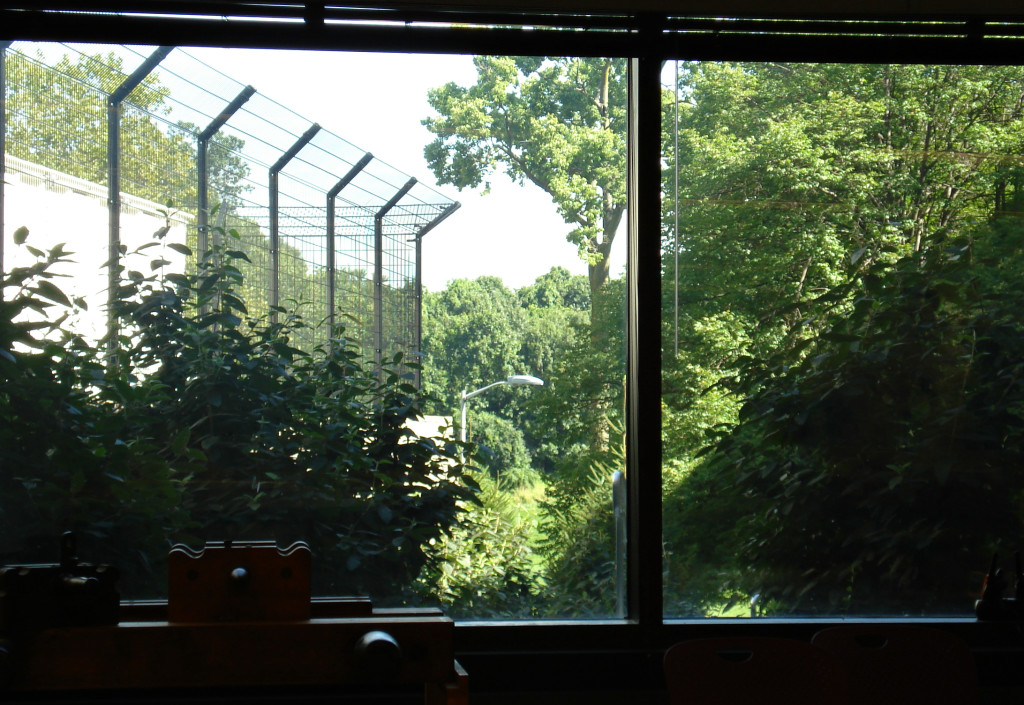
…
“You have a window!”

…
Making a blank book can be a lot of fun and it’s fairly easy to do if you have the right equipment. A blank book can be almost any size, shape and color that you want it to be. It can be used as a sketchbook, diary, photo album or just about anything you can think of. The type of book I am making is called a quarter binding because approximately one quarter of the cover is cloth while the rest of the cover is paper.
One of the best parts of the formation of our joint lab was the addition of a full time conservator. The University of Cincinnati lab had been performing a variety of conservation repairs or mends on general collection items for years. Tip-ins, tears, tape removal, sewing and spine repairs were all familiar types of mending to those of us who had been working in the existing UC lab. But when our joint lab began and our new conservator, Kathy Lechuga, started we quickly began to see that not all our repairs or mends were up to par. Kathy had a vast knowledge of conservation, including best practices that were more up-to-date. Even straight forward repairs like spine repairs (or re-backs) that haven’t changed much in the last 30 years needed some minor tweaking. But one repair stuck out as needing a major update, a paper hinge repair we had been doing for years and years.
…
One of the trickiest things about making a cloth-covered clamshell box happens at the very end when all the pieces finally go together. You’re applying a fair amount of adhesive to a fairly large surface area and the moisture in it inspires the boards of the case and the trays to want to curve. To suppress this natural tendency and make sure the pieces stick together properly we have to use a lot of weights.
…
What I love about the human race is we can have very similar characteristics or some really, really different ones. Like all the different colors out there or all the different smells, we all have something unique to bring to the table. I am happy to say here at our lab we are sure a mixed bunch of characters.
…
This past week the preservation lab hosted 3 classes with 3rd year fashion design majors.
The goal of the sessions were to familiarize the students with the basic parts of the book, explore different types of enclosures, and demonstrate how these simple structures can be “tweaked” to produce a wide range of compelling forms.
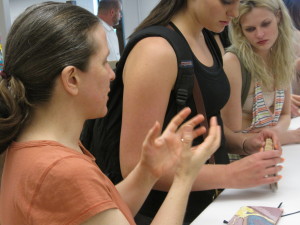
…
For library items that cannot stand by themselves because of their shape or size, placing them in an enclosure is a good solution to the problem. In this case we made a custom clamshell box with filler because the item, a book on monograms, is shaped like a spade.
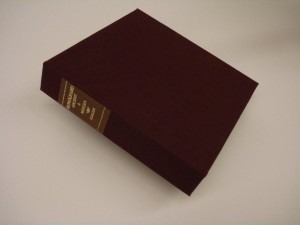
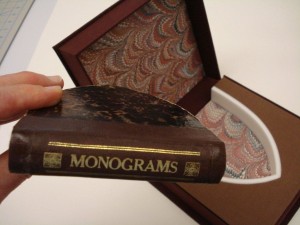
…
A few years ago if someone had asked me what I cut paper with I would have said, “A pair of scissors, of course.” Then I came to the Preservation Lab.
We cut a lot of paper here. It can be in big sheets, little sheets or tiny scraps. It might be heavy or lightweight, made of short fibers like the ubiquitous wood pulp paper or long fibers such as Japanese kozo paper. We use it for different things too. Heavy board for book covers and boxes, corrugated board for different boxes, light board for folders, paper for pages or repairing spines, Japanese paper for mending tears and making hinges, newsprint for waste paper to catch adhesive overflow. With so many variables it helps to have a few options for cutting the paper.
Probably the tool we all use most often for cutting paper is a scalpel. We each have a least a couple at our work station. My go-to scalpel is the #11 which has a fine tip and straight, angular blade. The #23 with its curved edge is good too, depending on the particular task. Scalpels are great when we need to make a nice clean cut trimming excess paper from a repair, or we use them with a metal straight edge when we need to make a long cut that wouldn’t be straight enough if cut with scissors.
This blog explains how we construct an acid-free enclosure to protect a book that is too small to stand alone on a shelf. The dimensions of the book in question are approximately 2” X 3”. As a rule University of Cincinnati Libraries requires that all shelved items be at least 5” X 7”.
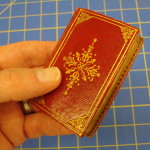
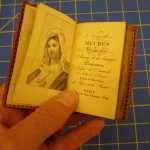
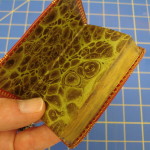
…
In honor of Preservation Week, the lab threw the doors wide open to the UC and PLCH communities for a Preservation Lab Open House. Colleagues from both libraries came to find out a little bit more about what lab staff do to keep our collections healthy and patron-ready.
We pulled out all the stops to give our guests a tour of our home away from home.
…